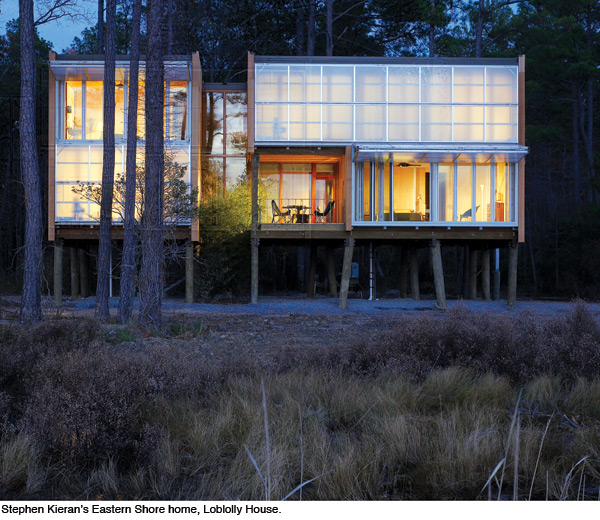In the Future, We Will All Live in Plastic Houses Put Together in Six Weeks

STEVE KIERAN LEANS ACROSS a conference table in the firm’s open, virtually wall-free office and reaches toward a model of the building that’s sure to dominate his not-so-distant future. He grabs a 1:600 scale 3-D printed model of the London embassy building and holds it up. As a few critics have noted, it looks a little like an elaborately carved sugar cube.
“We try to make buildings that are purposefully different and better,” he says. “That’s one of the most central facts about us. Research isn’t a tangent, or an adjunct function, but right at the center of what we’re doing.” He twists the model in his hands.
“It allows us to make things that wind up looking like this. It’s unique in appearance but was developed for performative reasons. This skin on the embassy is both a solar shading system and a system for gathering energy from the sun and collecting it through photo voltaics. And it’s a system to bounce light into the interior of the building. So it has a lot of functionalities. And it winds up with a rather unique appearance as well.”
That appearance hasn’t been universally praised. Beyond being compared to a sugar cube, KieranTimberlake’s embassy design has been described, unfavorably, as resembling a mid-American office park. The British press reported that the two English judges on the jury wanted to pick someone else. The former mayor of London sniped, “We expected something a little more exciting.”
“It takes a while to shift taste,” Timberlake says. “I think the embassy is on its way to doing that. So much of architecture is about shouting, at least in the contemporary milieu—who’s got the loudest voice, bling. The embassy is about performance, not just form. Performance meaning not ‘Look at me’ but ‘Look at how I work.’ How I gather energy, make people comfortable. How I’m flexible, nimble and long-lived, reducing energy and life-cycle costs—and beautiful at the same time.”
Performing on an international stage has made the partners hopeful about their prospects at home. Of course, wading deeper into the murky waters of the small pond of Philadelphia political and institutional culture could prove a cautionary tale in being careful what you wish for.
After all, the Delaware River is where grand development schemes go to drown, and the new plan by KieranTimberlake et al. has, at this early juncture, been met with only modest praise.
As for the original Dilworth Plaza plan, Center City District’s Paul Levy reports it was substantially altered to allay criticism. And while the Inquirer’s formidable architecture critic, Inga Saffron, has described KieranTimberlake’s sweeping, transparent headhouses as “elegant,” she’s also asked, “Does Philadelphia need them?”
A few blocks down Broad Street, the firm’s sensible and creative designs to enliven the Kimmel Center will probably stay on a shelf until years of misguidance at the Philadelphia Orchestra can be corrected, if they can be corrected at all. “It’s going to be a long process,” Timberlake says, “because they just don’t have the money.”
Still, as vividly as the partners remember Rome when they were ambitious young men, now, in established middle age, they can peer out the windows of their offices and see the possibilities.
Right behind them, on the Parkway, they can watch the construction of the new Barnes Foundation building, designed by the married team of Tod Williams and Billie Tsien. “They’re our good friends,” Timberlake says of the New Yorkers, “and we admire their work. But we would like a Barnes Foundation.” Just down the Parkway is Frank Gehry’s underground addition to the Art Museum. “Maybe we could get the next iteration of that,” Timberlake says.
“Because we’ve been recognized at the highest levels nationally and even internationally,” says Kieran, “we’re seen increasingly as a firm in Philadelphia that’s capable of anything.”
Their old boss, Robert Venturi, might have warned Kieran and Timberlake of the Philly phenomenon. This town is a good place for architects to start out, Venturi once said: “Philadelphians leave you alone to find your voice.” “Of course,” he added, “after you find it, they continue to leave you alone.”


